The Earls Court Development Company Impact Report





Formed in 2020, we are leading the transformation of the former Earls Court Exhibition Centre site – one of Central London’s most significant redevelopment opportunities. Our vision to ‘Discover Wonder’ started on day one with local investment and activation. As we progress the masterplan, this will become a reality, with a focus on creating a globally recognised destination.
After four years of extensive public consultation, we submitted a Hybrid Planning Application in July 2024 to the Royal Borough of Kensington and Chelsea and the London Borough of Hammersmith and Fulham. This marks a major milestone in our journey towards delivering a vibrant, sustainable neighbourhood that
will include new homes, purpose-built workspaces, cultural and community spaces, retail and leisure facilities and a high-quality public realm.
Our approach is to start local and aim global, ensuring that the benefits of this transformation are felt by local communities from the very beginning. We are committed to transparency and engaging in open, honest conversations with all stakeholders.
Through collaborative working, we aim to create a place that is not only welcoming and accessible but also serves as a model for sustainable, mixed-use developments for future generations.

Since its inception in 2020, The Earls Court Development Company (ECDC) has committed to creating an approach to sustainability that is exemplary in its ambitions, generating social and economic impact across many factors and a wide range of stakeholder groups.
Marking the period between November 2023 to the end of October 2024, this year’s report highlights the impact of the work we are doing with the communities of the Royal Borough of Kensington and Chelsea and the London Borough of Hammersmith and Fulham. It demonstrates how the transformative effect of our work across these three areas –environmental wellbeing, social impact and economic inclusion – has steadily grown.
This year, our activities have helped achieve an estimated:
Signed up to the £23.1 million generated in additional local spend
£13.6 million gross value added created
46 projects supported
£9.1 million in social impact created
413 full time equivalent jobs created Integrated water management strategy established Science Based Targets Initiative (SBTi)

To ensure our impacts are good for the planet and our climate –to go beyond net zero carbon – we must respect and live within our collective environmental limits, now and for tomorrow.
To support this, we created a series of Principles for Future Living in a Sustainable Development Charter for the Earls Court Development. Our Charter has informed the evolution of the masterplan. The masterplan can deliver on the ambition of the Charter and improve the local environment of Earls Court. Here, we outline our goals and how we expect them to be met.
The charter sets out six goals:
We will achieve net zero carbon (in line with the UK Green Building Council and Science Based Targets methodologies) and aim to go beyond – to extract more carbon over the lifetime of the development than is emitted.

This means we have committed to:
• Implementing a 5th generation ‘Ambient Loop’ energy network to enable Site-wide CO2 emissions savings of over 65%
• Delivering zero carbon on-site emissions for all buildings, plots and public realm functions in operation
• Designing residential buildings using Passivhaus principles
• Implementing at least 280kW of photovoltaics (also known as solar cells), generating enough energy annually for more than 65 homes
• Setting a voluntary target carbon budget for all buildings, plots and proposed development components
• Co-locating energy network and equipment which minimises embodied carbon and maximises operational efficiency
• Reducing the upfront embodied carbon of buildings: the target is less than 500kgCO2 /m 2 for domestic buildings and less than 650kgCO2 /m 2 for non-domestic
We will limit the need for fresh water and use water resources intelligently.
The aim of the water strategy at Earls Court for the proposed development is to minimise the consumption of potable water on the Site and minimise the quantity of water leaving the Site. By doing this, Earls Court aims to support and deliver a climate resilient landscape, adapting to a changing climate.

This means we have committed to:
• Building sustainable urban drainage systems (SuDS) to slow water run-off, ensuring more than 60% infiltrates the ground
• Minimising demand in buildings
• Ensuring all public realm landscape irrigation is from rainfall and/or greywater, with up to 40 days of water storage
• Harvesting water for The Cascades from recycled sources, with up to 60 days water storage
• Selecting climate resilient species in the planting strategy to minimise water demands for irrigation
We will improve air quality on-site and for our neighbours.

This means we have committed to:
• Maximising vehicle and car-free public realm
• Repurposing the existing Table and enclose this section of the West London Line, limiting pollution (subject to third party approval)
• Allowing no combustion for buildings on-site (except life safety generation, until non-combustion solutions become available)
• Monitoring on-site air quality
• Providing electric charging points to all parking spaces to promote EV uptake
• Providing electric car club spaces for 25 vehicles
We will nurture healthy lifestyles by promoting the use of a sustainable transport hierarchy. Create opportunities and spaces that improve the way people feel about themselves and the area.
The Earls Court Development will look to nurture healthy lifestyles by promoting connections to nature, reducing barriers to physical activity and the use of sustainable transport hierarchies such as walking and cycling to provide a safe and accessible space for all. This will create opportunities and spaces that improve the way people feel about themselves and the area.
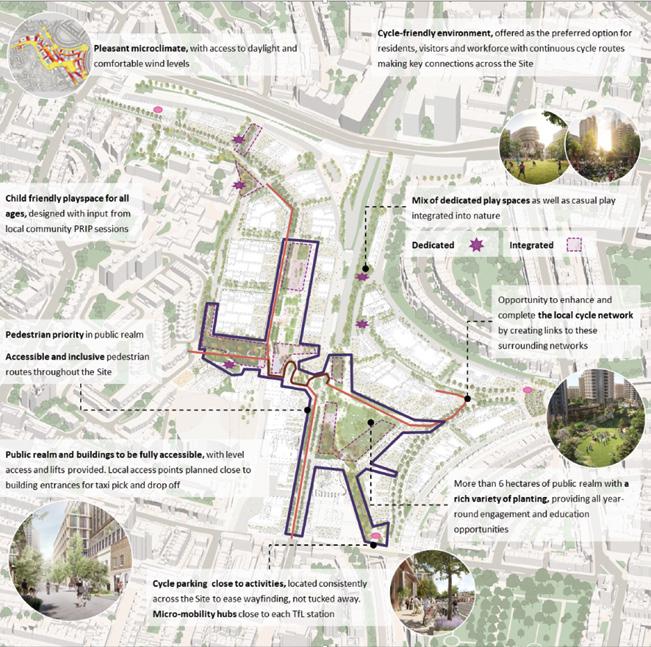
This means we have committed to:
• Delivering a fully accessible and inclusive environment with step-free mobility
• Providing a planting strategy to provide wonder and delight. For example using species with different flowering seasons to create all-year variety
• Creating multi-generational public open spaces including integrated play space for children of all ages
• Making comfortable living environments internally and externally for all residents by positively improving the microclimate
• Continuing to work with our Public Realm Inclusivity Panel to interrogate, critique and refine design principles
We will adopt the key principles of durability, disassembly, reuse and adaptability to enable the efficient use of natural resources.

This means we have committed to:
• Retaining buildings and structures which are suited for the requirements of the Site
• Using materials which minimise carbon impacts, targeting 20% of materials that are reused and/or contain recycled content
We will deliver buildings with recognised and verified sustainability ratings.
This means we will:
• Undertake BREEAM Communities pre-assessment for the proposed development with a base target of ‘Excellent’
• Undertake HQM assessment with a base target of HQM 4 stars for residential plots and buildings
• Seek to achieve BREEAM ‘Excellent’ rating in office buildings; and a minimum of ‘Excellent’ for remaining non-domestic uses over 1,000m 2
• Seek to achieve WELL Gold in office buildings

The table below outlines the numbers of metrics in each of the Sustainable Development Charter (SDC) goals. It then shows the current performance spectrum of the metrics, as a summary across both plots and the masterplan.
The results are based on a review of plots and masterplan Design Team responses.
For further detail, see the MP03 report: https://adoddleak.asite.com/lnk/dExGr6BtkrARbLI6bXG4
The mental and physical health of our community is, to a large extent, determined by the environment we live and work in.
Common pollutants in London from cars, trains and buildings increase the risk of short and long-term health complications.
As delivering clean air is a goal for us, we aim to remove sources of pollution and work with partners to tackle emissions at source. We will investigate new technologies and systems to trap and remove pollutants from the atmosphere. To do this, we needed to understand how the area performs now before development occurs, therefore a series of air quality monitors have been implemented for long-term monitoring.
The map on the right shows base layer the projected annual average concentrations of nitrogen dioxide (NO2) across London in 2025 as modelled for the GLA London Environment Strategy (2018). It suggests that the whole of the Site has a concentration of 20–25 µ g/m3 with the legal limit being 40 µ g/m3 . It shows high concentrations from the roads around the Site but does not show any pollutants from the railway tracks.
To understand and then make improvements to air quality from all sources of air pollution, we have implemented a long-term monitoring regime. Air quality monitoring on-site has been in place since July 2022. This has improved our understanding of the current quality of the air along with the range of sources.
The map shows the five monitoring sites and the annual average pollutant levels at each of them. The most recent year of monitoring data, July 31, 2023, to July 31, 2024 showed that oncentrations of NO2 and particulate matter (PM10 and PM2.5) were typically over 65% below their respective legal air quality limits.
Monitoring has shown daily profile changes for pollutants influenced by commuting times, weather changes and train schedules. This illustrates how our Site is influenced by existing pollution and how the air quality climate is complex and can vary from hour to hour.
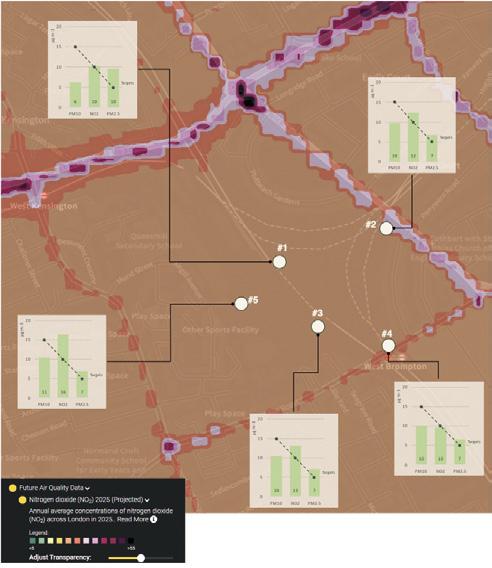
Base layer from https://apps.london.gov.uk/air-quality. The projected annual average concentrations of nitrogen dioxide (NO2) across London in 2025 as modelled for the London Environment Strategy (2018). This modelling takes into account the policies included in the Mayor’s London Environment Strategy. The legend below increases in increments of 3µg/m3, the legal limit is 40µg/m3
The results also outline the Site targets, based on the World Health Organisation’s 2021 global air quality guidelines, a world-leading source on the requirements for clean air:
PM10 levels are typically already lower than the targets
NO2 in key locations exceed the targets. This could be attributed to on-site generators or trains passing
Air quality concentrations monitored at the Site reflect the current conditions of the Site which will change throughout the meanwhile, construction and operational phases. Therefore, we will continue to monitor air quality throughout these phases of the development to be able to assess the progress of clean air goals. This will include additional monitoring
PM2.5 levels are close to or above the targets
to the north of the Site. Monitoring on-site air quality will continue for at least ten years after completion and will be made publicly available.
The air quality positive approach described earlier will contribute towards keeping the pollutant concentrations at the Site at this level or better it.

Nature presents untold benefits to the health and wellbeing of both people and the planet. Amplifying its presence and fostering better connections with nature is our golden thread –creating diverse and generous spaces to play, meet, relax and for sanctuary, whatever the season, inside or out.
A few features on-site provide the current biodiversity of the Site. These elements are small but key.
The Community Hub Garden opened in June 2022 and provides 800m² of community green space, which is maintained by Hammersmith Community Gardens Association with the help of community volunteers. It provides a range of dense planting with habitats for insects and bird life, as well as a preview of the type of landscape and planting density of future parks outlined in the masterplan. Read more about the garden’s impact on page 36.


Living wall green hoardings installed by ECDC along Lillie Road and Old Brompton Road, mix culture and nature, with some depicting famous faces from across the years. They provide vertical planting along a busy road, helping to catch pollutants, and provide a visible experience of nature when people leave West Brompton station.

wall green hoarding
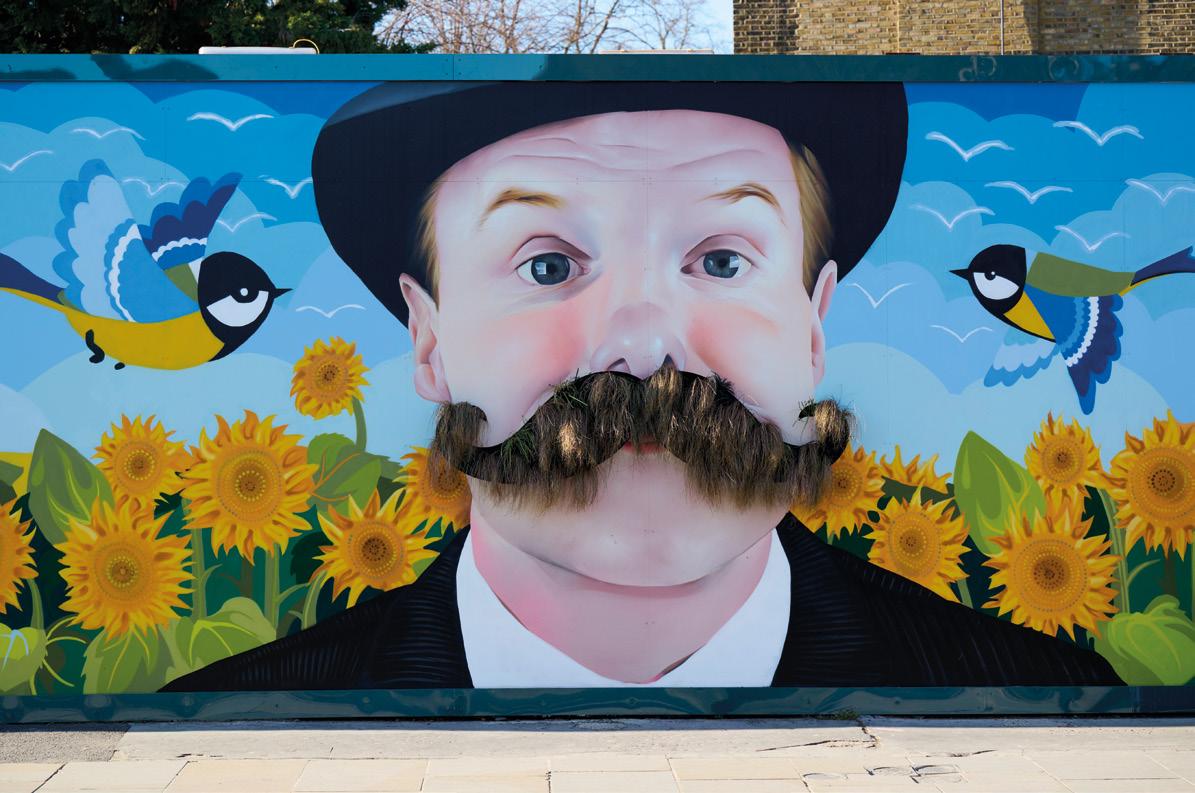
To support the masterplan, Hoare Lea implemented their nature-based solutions tool, Biome. It is a user-friendly interface to estimate the financial and non-financial natural capital – that is the value derived from nature and environmental processes – from a landscaping strategy. It will help guide the future design of the development with options to create positive environmental and social outcomes.
Biome allows us to measure the benefit of a range of nature-based solution landscaping features, such as the number of trees, green walls or roof area, or permeable paving area. Metrics include noise reduced, carbon sequestered, rainwater managed and property value.
The results of any proposal can be compared against predetermined targets and relevant key performance indicators at both a plot and masterplan level to ensure all plots reach the necessary goals.
This then helps show the performance of the design strategy and can estimate the financial return to the developers and to society, creating a better basis for evidence-based decision making.

Science-based targets remove the arbitrary approach to carbon reduction targets and replace it with a global benchmark; businesses can set aggressive yet reasonable goals that align with limiting global warming to 1.5°C.
This resonates with one of our goals to bring forward a masterplan that will both achieve net zero carbon and will go beyond that to extract more carbon over the lifetime of the development than is emitted.
ECDC completed a rigorous application with our near term and net zero targets approved by the SBTi in October 2024; one of a handful of UK developers to have their science-based targets validated.
There are two time periods at which the science-based targets are assessed, with differing criteria. Simply put, the first looks for the businesses’ own emissions and those of its premises are to be cut by 50% within 5 to 10 years; the second is a 90% cut in all emissions by 2040 or 2050.
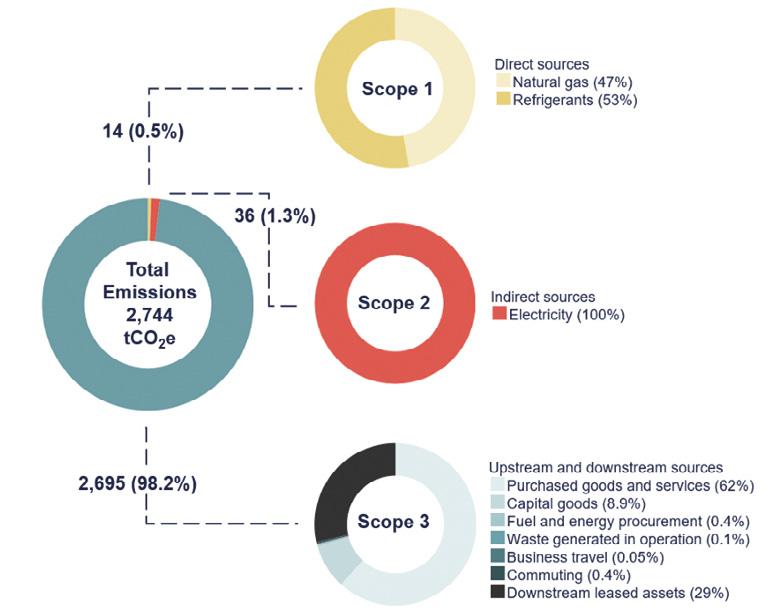
We commit to reducing absolute scope 1 and 2 greenhouse gas (GHG) emissions 50.4% by 2032 from a 2022 base year. These are the emissions that ECDC makes directly, over properties we directly control and those that we use indirectly – for example our heating and electricity.
We commit to reducing scope 3 GHG emissions 58.1% per square metre of net lettable area within the same timeframe. This covers all of the emissions ECDC
is indirectly responsible for, up and down the supply chain.
Our net zero and long-term targets
We commit to reaching net-zero greenhouse gas emissions across the value chain by 2050.
We commit to reducing absolute scope 1, 2 and 3 GHG emissions 90% by 2050 from a 2022 base year.
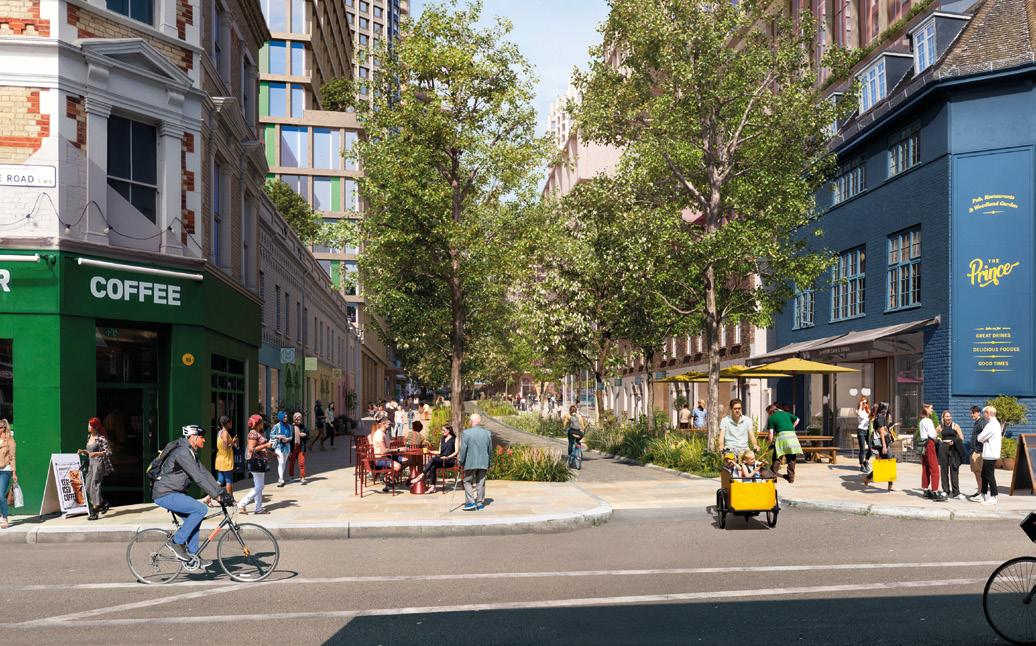
There are several activities we will monitor over the next year. These are outlined (but not limited to) below:
BREEAM is an internationally recognised sciencebased sustainability framework and BREEAM Communities is used to assess sustainable design in the masterplanning of new communities and regeneration projects. We can share progress and outcomes from the assessment.
As work progresses on the redevelopment of the Site, material use – and therefore waste – is expected to increase. Waste volumes and quantities recycled are collated by contractors and the cumulation of this can be reported. Our aim is to reduce/avoid waste to landfill, by maximising reuse and recycling first.
Energy and carbon emissions in line with SBTi
As the SBTi targets are now validated, an annual submission must be met to the SBTi in order to maintain our status. This submission will include energy and carbon reporting from all activity, and means that our scope 1, 2 and 3 emissions will be made public.


We have made a conscious effort over the last five years to use existing buildings on the estate for temporary or short-term uses. The benefits and uses of this repurposing are outlined on the following pages.

The Community Hub has been repurposed from its original set up as the marketing suite for the previous owner and developer of the Site, which had been left empty and unused for some considerable time. ECDC – in one of its earliest acts – decided to convert the building into a Community Hub and to use the gardens for a range of impactful uses. The Hub has been the focus for the community engagement programmes over the last three-plus years.

The building includes a unique, large, open assembly space which has been used by multiple different tenants.
Most notably, the space was used by The Fulham Boys School during Covid, allowing extra space for students to maintain social distancing while learning and sitting exams.
Most recently, The Lost Estate theatre group has occupied the building since March 2023. The Lost Estate also raises money for the Felix Project, a charitable organisation that saves surplus food from suppliers and redistributes it to charities. In the last year, they raised a total of £30,033.45.


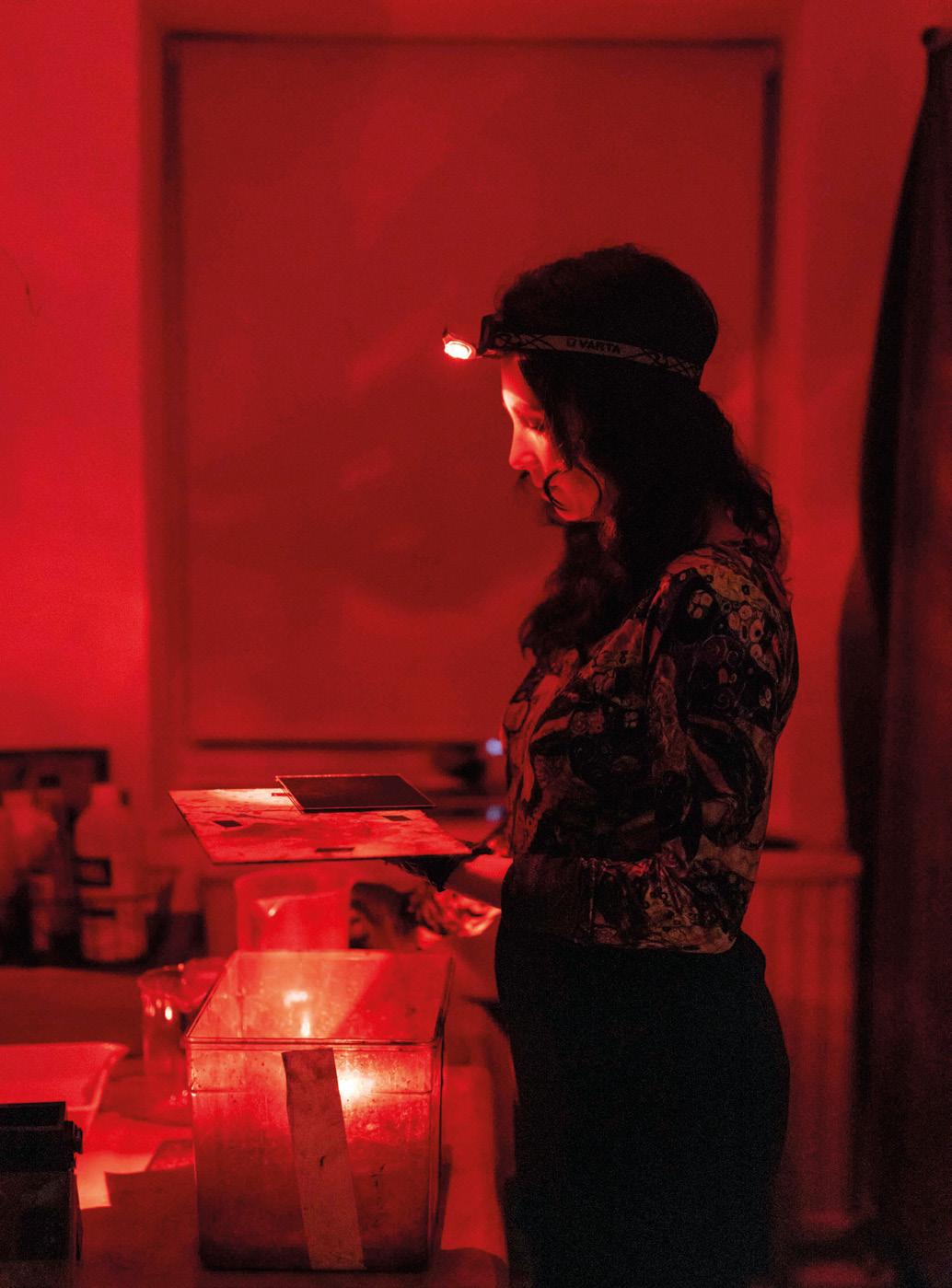
Working with This is Projekt, we turned six derelict Victorian townhouses on Empress Place into 8,500 sq ft of workspace for creatives and innovators, who live and/ or work in Hammersmith and Fulham and Kensington and Chelsea. Planning permission was granted in 2022 for 46 new spaces, creating affordable studios and office spaces supporting the arts and sciences.
The Empress Place and the Seven Stars buildings have been retrofitted and repurposed into homes, occupied
in a guardianship scheme. This means these buildings are maintained, occupied and do not fall into disrepair, while providing much needed housing.
As with the Community Hub, and particularly in relation to the buildings along Empress Place and Empress Studios, this is a good example of the circular economy in action. The buildings have been repurposed – in many cases brought back to life from dereliction. Not only do they provide much needed local social and economic positive impact, they minimise the waste for materials – again reducing the overall carbon impact of the development.
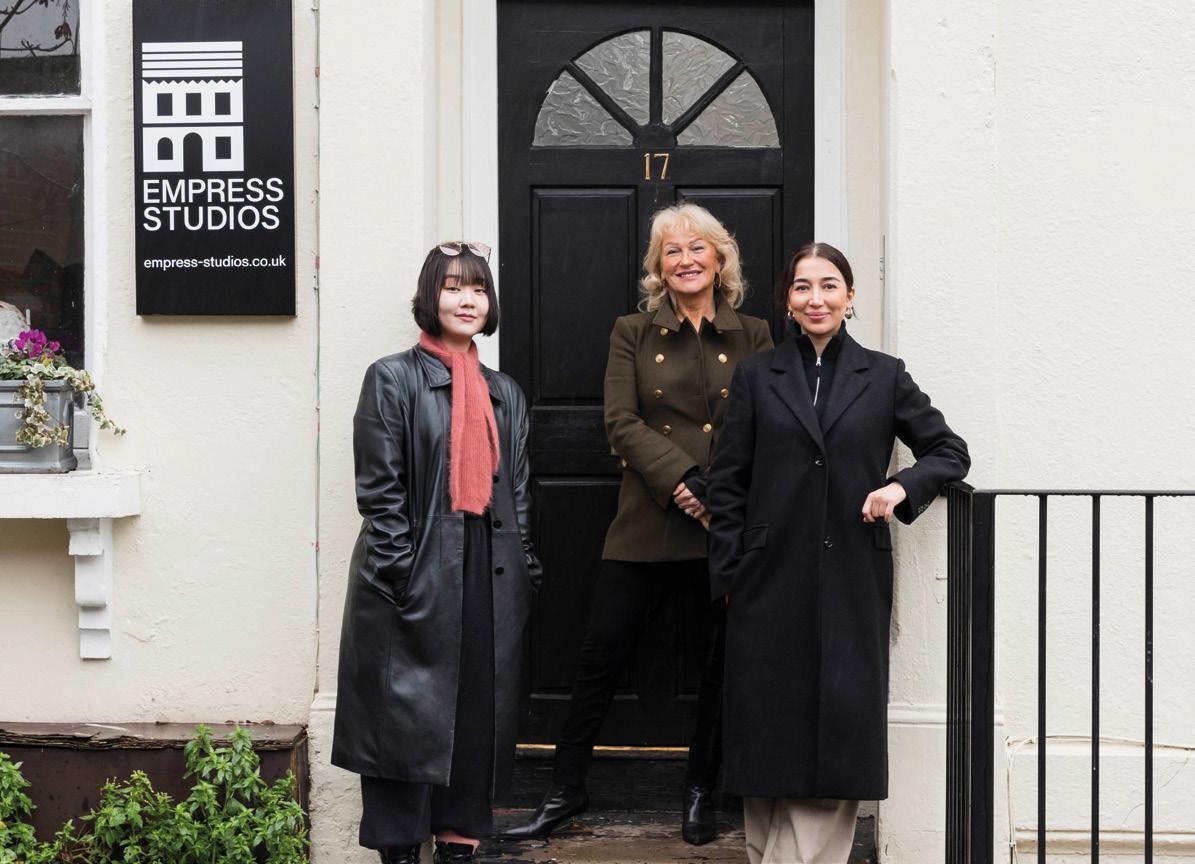
We welcomed the ground-breaking new attraction BBC Earth Experience – featuring Seven Worlds, One Planet – from March 2023 to January 2024 at The Daikin Centre, a purpose-built and demountable venue. BBC Earth Experience offered visitors the chance to experience the extraordinary diversity of our seven unique continents, featuring bespoke narration from Sir David Attenborough. The attraction allowed visitors to learn about nature and consider their relationship with the environment amongst other social benefits.

BBC Earth Experience set out to maximise the efficiency of the venue, while minimising their environmental footprint. As a result of their tenancy:
10,000
they saved the equivalent carbon emissions from 10,000 trees by running on 100% renewable energy, compared to traditional gas-powered setups
37,700
plastic bottles were avoided by the use of hydrating water fountains
Over the course of the tenancy, more than 375,000 people visited and thousands of students immersed themselves in the venue.
1,944,955
seeds were sold in their gift shop for planting in the wider community by visitors
18,280kg
of waste recycled since opening, equivalent to a total of 12,100kg of CO2 savings
Surveys showed that many of the visitors would look to reduce their energy use, reduce waste and discuss environmental issues more. For local visitors, the biggest impact was spending more time in green spaces, reducing car use and donating to environmental charities.

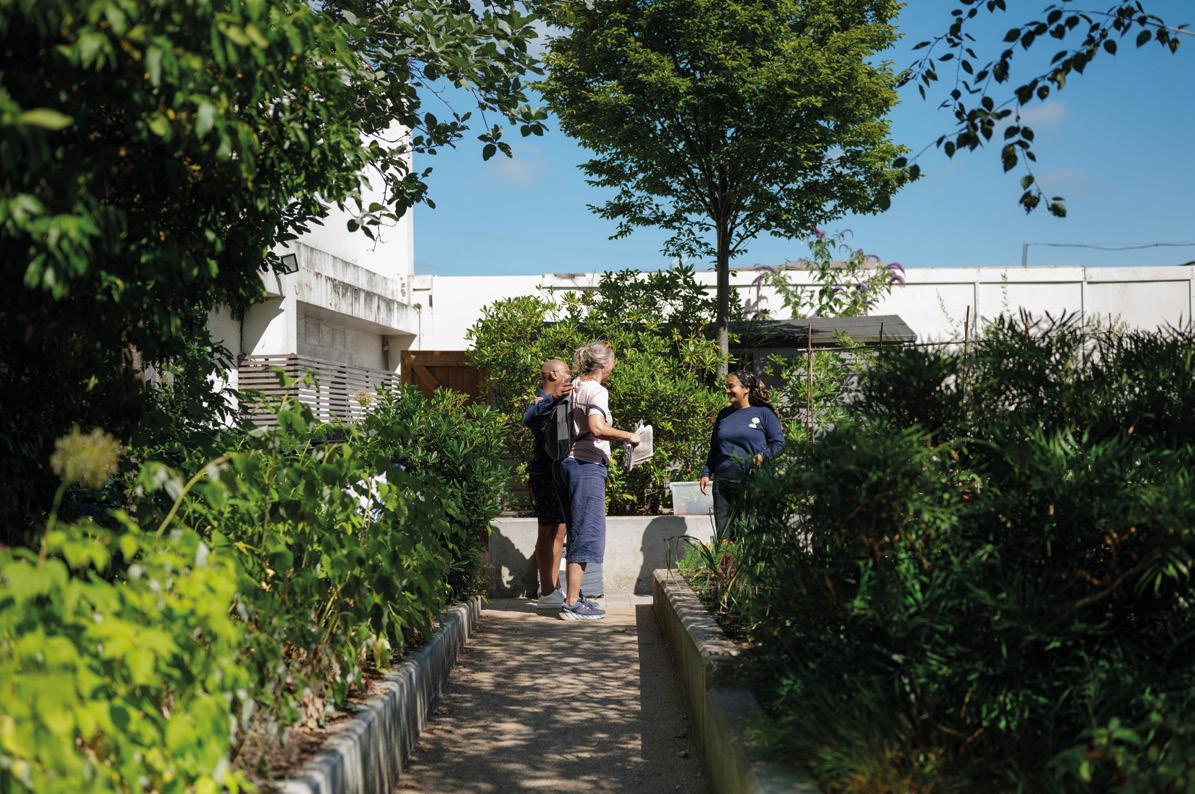
The statutory biodiversity metric is how we measure biodiversity value for the purposes of meeting the government’s policy of Biodiversity Net Gain (BNG). This policy states that all developments have to achieve an enhanced BNG of 10% over the biodiversity any site already has before development. This is done by calculating the number of Biodiversity Units (BU) a site has using a formula. The formula takes different factors into account, including the habitat’s size, condition, type and strategic significance. This includes both existing habitats and those planned for enhancement or creation. The metric also incorporates risk multipliers and trading rules, which set minimum habitat creation and enhancement requirements. The assessment must be undertaken by a ‘competent person’, as set out in the UK Government’s guidance.

Social impact refers to the significance that individuals and society assign to changes in lives influenced by the social, economic, and environmental effects of development. It is measured both qualitatively and quantitatively and is presented in this report in monetary terms, as well as through key quotes and case studies.
Social impact will continue to be a core driver in everything we do at Earls Court and is underpinned by the following goals:
A safe, inclusive and supportive place for everyone
Involving local people
A wonderful place to live, work and visit
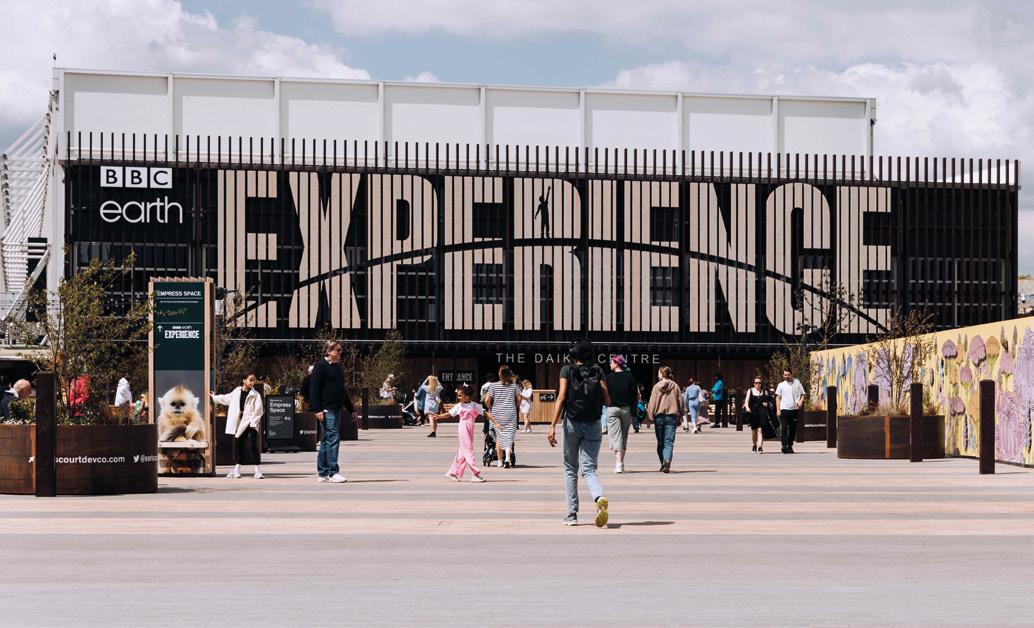
Economic impact assesses economic activity associated with a particular intervention or set of actions. It is usually measured in terms of the additional expenditure, GVA and employment that is generated within the local economy. We will continue to deliver the very highest standards of economic inclusivity throughout the lifetime of development working to the following goals:
Maximise appropriate economic growth in the local area
Create an affordable community Provide access to economic opportunities for all

£1.2 million increased social impact created for the local community
400 FTE jobs supported, contributing to local employment
£23 million in local spend, maintained by strong local economic support
£0.7 million boosted GVA compared to the previous year
Building on our success from last year, we have focused on creating as much benefit for the local community as possible.
As well as submitting the Hybrid Planning Application, we have continued to invest in the community. To deliver this benefit, we have focused on:
• Meanwhile activities
• The Community Hub
• Earls Court Community Fund
• Sponsorships
• Skills and education
• Lillie Road shops
• ECDC internal activities
Through our meanwhile programme of activities, we’ve hosted events, provided community space and continued to open up the Earls Court Site. Our community activities have also meant that we have been able to support the health, wellbeing, skills and education, among other factors, of local people. We’ve done all this through an array of activities, from the activities of the Community Hub, the opening of an immersive BBC Earth Experience, the continuation of the Earls Court Community Fund and the everpresent support for local organisations.
We’re also aware of the social and economic impacts that our plans for the development site will have on local people. We wanted to hear from as many stakeholders as possible and to allow everybody to have an influence on the future of the site. We’ve hosted neighbourhood engagement activities, workshops, Site tours and newsletters to reach as many people as
possible, while also using the development as a platform for boosting education and creating skills for local young people.
Finally, we recognise the importance of being a good neighbour and contributing to the community through our everyday activities. To understand how these activities have affected people, around 23 interviews, 56 feedback forms and questionnaires and 194 survey responses from a range of stakeholders across 45 programmes and activities were carried out by social value consultants, RealWorth, and economic consultants, SQW. This data was then used to calculate our impact.
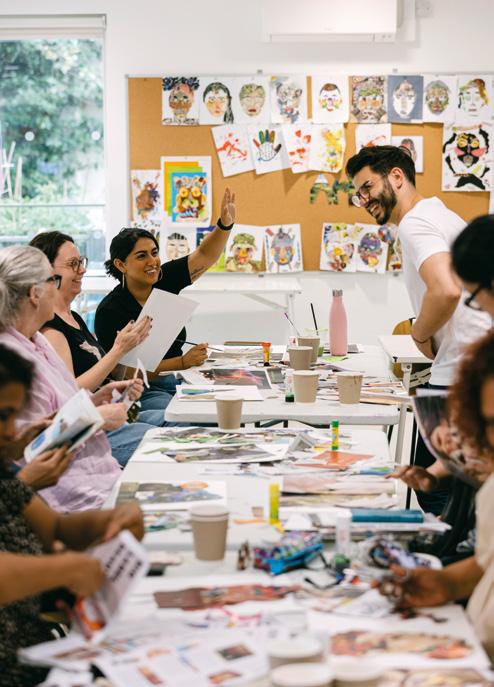
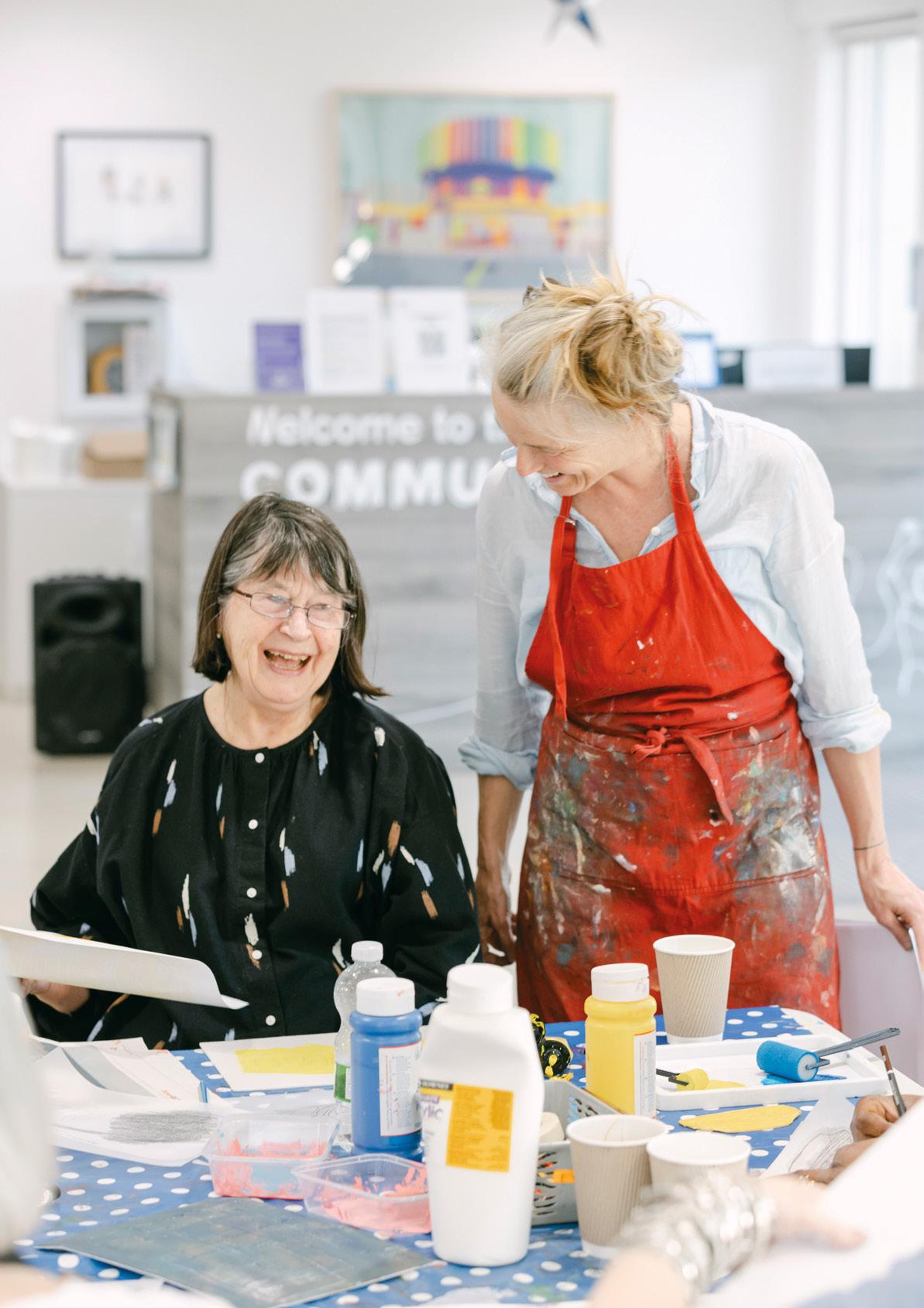
A centre for local people offering a transformative programme of future-focused skills and training, equipping the next generation of workers with vital skills, particularly across the built environment and the clean and climate tech sectors.

37 homes (13 in Empress Place and 24 in Seven Stars) were refurbished and brought onto the market by LOWE Guardians at lower-than-market rent. Over the year, 54 tenants occupied the rooms, including key workers, young professionals and creatives.

A creative workspace redevelopment by This is Projekt in collaboration with ECDC. The space contains 46 lettable studios, occupied by about 55–60 creative artists. Roughly 80% of the artists are from the local area.

Improvements to the public realm by Hammersmith Community Gardens Association.

To demonstrate how social and economic impact has been created through the Meanwhile Programme, case studies of the Artist in Residence programme, Padel Social Club and the Skills Centre are provided below:
In January 2023, we launched an Artist in Residence programme in partnership with the National Portrait Gallery, whereby we provide studio space in the Community Hub Annex for three months. The artists are given a grant of £3,000 per month and up to £1,000 a month for an art material allowance and need to use the space for a minimum of three days a week. They are also required to provide weekly workshops to Hub users.
The Artist in Residence Programme alone helped achieve an estimated:
• £58,000 in social value created
• £33,931 in additional local spend
• Additional £19,680 GVA gross value added
• 0.6 FTE jobs
Liah Edwardes, an Artist in Residence at the Community Hub
Liah Edwardes is one of the four Artists in Residence at the Community Hub during this assessment period, with her work focusing on community engagement through creative workshops. Liah’s practice is rooted in community involvement, and the programme allowed her to engage with and draw an array of local individuals, including a long-time magazine seller who had “so many moments happening around her”, and a newcomer to the Hub, whom she taught to embroider during a difficult life period.
Liah’s work aims to provide participants with a creative outlet that fosters personal expression and a sense of belonging, with some attendees even continuing their artwork at home. She believes that the residency has not only enriched her practice but also helped her to develop a strong narrative through her interactions with the diverse local population.
Her experience underscores the importance of maintaining community involvement throughout the process and ensuring the Hub remains a vital space for local residents.

Padel Social Club at Empress Space offers five outdoor showcase courts. The site opened in Autumn 2023. It provides sports, wellbeing facilities and food and beverage, creating a social hub for the community with up to 2,000 weekly users, half of whom are local residents.
We have worked closely with Padel Social Club to ensure there are pro-social benefits for the local community. The site hosts women-only, LGBTQ+, and singles events, and it offers free use to Community Hub users. Regular users of Padel Social Club have increased physical health, improved wellbeing around their health, and a new place to socialise with people in the area.
Padel Social Club alone helped achieve an estimated:
• £1.7 million social value created
• £1.2 million in additional local spend
• Additional £437,676 GVA gross value added
• 15 FTE jobs
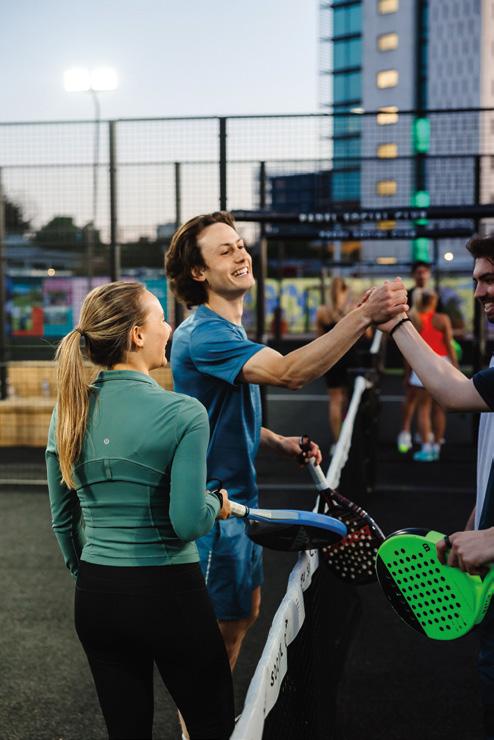

The Earls Court Community Hub opened in June 2022 and is located at Aisgill Avenue in West Kensington. The Hub is a communityfocused space for activities, workshops and community engagement. There is a wide range of activities at the Hub, some of which are delivered by the Hub and others delivered by local charities and community organisations. The activities on offer fall into the following categories: physical; social; creative; educational; therapies; children and families; half-term activities; and others. Across the reporting period, there were over 8,500 visitors including over 1,000 unique users.
The Community Hub alone helped achieve an estimated:
• £625,000 in social value created
• £237,514 additional local spend
• Additional £13,758 GVA gross value added
• 4 FTE jobs
The Community Hub is estimated to have created £110,000 more social impact than the previous year. As a result of the activities of the Hub, users have greater wellbeing through civic engagement, skill development, a nicer urban environment, wellbeing around financial support, greater social connections, and improved mental and physical health.
Court Community Hub

Users were also offered the opportunity to provide feedback through a ‘Communitree’, whereby people were invited to write their feedback on a tag and hang it on the tree. This was set up in response to the Community Hub receiving ad hoc feedback daily but having limited ways to capture small, powerful comments.


Examples of responses to the Communitree which demonstrate the impact of the Community Hub are shown below:
“I like the environment and the community. Me and my kids love the Hub and always have a great time.”
“The Hub is a safe space away from the hustle and bustle. PS I love the Hub team.”
“I’ve been coming since stopping work and I’m really grateful.”
“Great place to show and plenty to do with the family a very welcome place and helpful and class is very low prices.”
“My Hub is a place of meeting place of harmony place of serenity meeting and making friends.”
“Amazing to be able to have foldable therapies such as Reiki and acupuncture.”
“Mimi and Alba are wonderful warm and hospitable, love the diversity of community events especially upskilling like sewing corner please more of these types of workshops like furniture and crockery electrical bike repair and maintenance.”
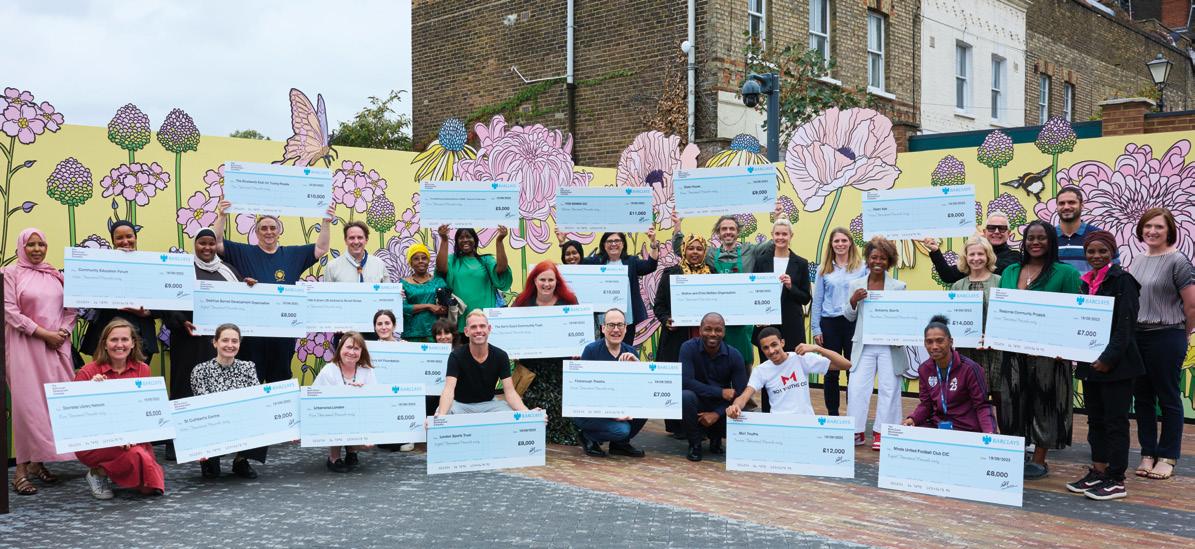
The Earls Court Community Fund was set up in 2021 to support the development of local projects that deliver community activities, support residents in engaging with their neighbours and build community connections around the Earls Court Site and surrounding areas of LBHF and RBKC. To date, over £700,000 has been provided to organisations in the local community.
The Community Fund helped achieve an estimated:
• £4.1 million in social value created
• £207,000 in additional local spend
• Additional £68,310 GVA gross value added
• 1.7 FTE jobs
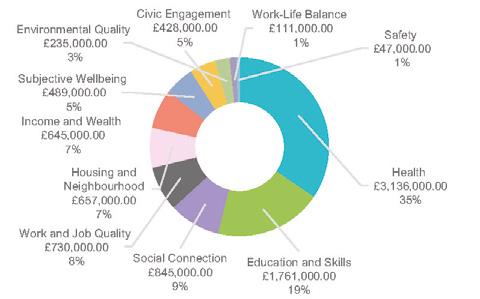
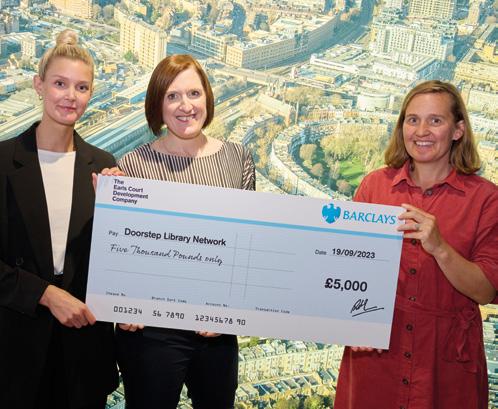
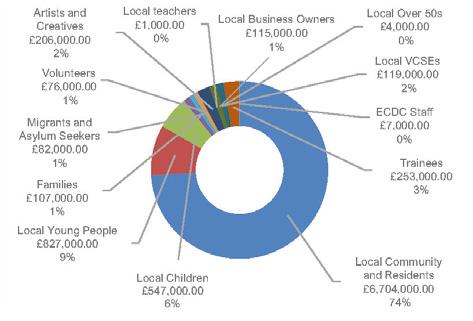
Since its inception, the Fund has supported initiatives focused on community cohesion and support, including Barons Court Project’s work with homeless individuals, as well as projects improving health and wellbeing, such as Minds United Football Club’s mental health-focused sports programmes. The full list of grantees can be found below.
10th Fulham (St Andrew’s) Scout Group
Action on Disability (AoD)
Barons Court Project
Community Education Forum
Dadihiye Somali Development Organisation
Dads House
Doorstep Library Network
Finborough Theatre
FOR WOMEN CIC
London Sports Trust
Minaret Community Centre
Minds United Football Club CIC
Mo1 Youths
Mother and Child Welfare Organisation
Open Age
Response Community Projects
Solidarity Sports
St Cuthbert’s Centre
The Bomb Factory Art Foundation
The Brunswick Club for Young People
The Earl’s Court Community Trust
The Redeemed Evangelical Mission (TREM) –
Place of Our Sanctuary
Urbanwise.London
Enhanced Scouting programme to grow the Group
Welfare Benefits Service (WBS) extension
Morning Drop-In Centre
Community Response Education Project (CREP)
Earls Court Family Support Group
Dads House Food Bank
Shared Reading Project - Clem Attlee
The Finborough Theatre’s Season Autumn/Winter 2023/24
Harbouring Women
Earls Court Active Together
ACTIVE LADIES
Sports Development Hub
Youth Empowerment
Earls Court Health Hub
Connecting Communities – Year 3
Volunteer Coordinator
Ongoing support towards our Family Den and After School Club
Refettorio Felix at St Cuthbert’s Centre
Shaping Spaces Sculpture Trail
The Brunswick Senior Holiday Activity Programme 2023–24
Earl’s Courtiers Theatre Group Summer Production 2024
Open House
Discover Your Earls Court
To demonstrate how social impact has been created, some examples of the organisations and their projects that have benefited from the grant are shown below.
London Sports Trust aims to inspire positive change for disadvantaged young Londoners through the power of sport, training and life skills to improve life outcomes as well as physical and mental health. They received £8,000 to provide sessions for young people.
The work of London Sports Trust has encouraged young people to take up training courses increasing possibilities of future employment, involving young people in sports and sports coaching, and providing an awareness of the environment and history.

“The children and young people from the local area reported an increase in their mental and physical health… Our coaches have also seen an improvement in self-esteem and confidence as they meet new friends from the local area and learn new skills.”
LONDON
SPORTS TRUST
Minds United Football Club CIC brings together football in the community and education department along with the club’s other charitable and community activities. They received £8,000 in funding to promote their initiative.
Key social benefits include Minds United have supported users in FA coaching courses boosting knowledge and skills, the sessions support physical fitness and mental wellbeing through sports therapy, and the users have reportedly built relationships that would otherwise not have been created.
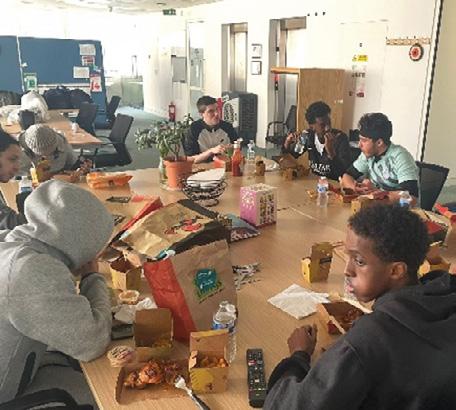
“Our activities provide an avenue for individuals of all ages and abilities to come together, bond over shared interests, and form lasting friendships. Moreover, engaging in sports can have numerous health benefits, including improved cardiovascular health, enhanced coordination, and stress relief.”
MINDS UNITED FOOTBALL CLUB CIC
Mo1 Youths are youth workers aiming to support and mentor young people in West London. They received a grant of £12,000 to deliver programmes for hard-to-reach young people living in and around Earl’s Court and West Kensington.
“The project has supported disadvantaged young people to take part in meaningful activity across the south of the borough, enabling them to have structure, purpose and drive to improve their situation, whilst taking advantage of activities.”
MO1 YOUTHS
Mo1 Youths: an attendee’s story
The Attendee had left school with grades lower than level four and subsequently struggled to complete college. It was reported that they fell into the wrong company and became known to the local police after being issued with an ASBO.
Mo1 Youths employment advisor and wider team have been instrumental in shaping the life of this young person, thanks to his involvement with Mo1 Youths, they have not only found their purpose but have also made an impact on the lives of other youths who attend the project.
Since acquiring the site, ECDC has provided a one-off grant and sponsorship funding to local organisations that play an active part in the communities of RBKC and LBHF. Since November 2023, ECDC has provided roughly £70,000 in grants and supported eight organisations. This has included:
• Earls Court Youth Club Emergency Relief Fund: grant to support food and other services
• Earls Court Film Festival: regular film festival in Earl’s Court, sponsored by ECDC
• Christmas Lights RBKC: donation towards Christmas Lights along Earl’s Court Road
• Performing Arts at Kensington Aldridge Academy: donation towards the costs of performing arts at Kensington Aldridge Academy this year
• ECDC & Consultants Gifting Tree: donation towards Christmas presents for children at Earls Court Youth Club and Solidarity Sports
• Lyric Theatre Summer Workshop
• H&F Giving Winter Support Fund: supporting the costs for items in our goody bags to support older residents during Christmas
• Historic England Blue Plaque Scheme: sponsorship funding
The sponsorships are estimated to have created around £664,000 worth of social impact through the activities that they enable.
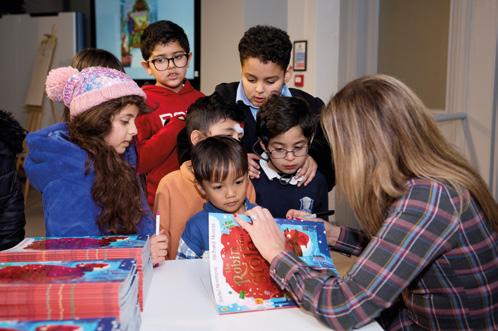

Earls Court Youth Club is a space where young people can come to chill with friends, socialise and have fun. A donation of £5,000 was provided by ECDC for an emergency relief fund, which helped to provide food and support towards core costs.
In total, over 250 children, 300 young people, and 50 adults are reported to have benefitted from the contribution, with better social connections, physical health, education, and positivity towards the local area key outcomes created.
When [they] first attended ECYC, they were extremely anxious and did not want to engage in activities, dine at the youth club or play with other children. After some 1:1 chess and engaging in other activities, they now play football regularly, dine with their peers and has made friends at ECYC, whom they play with outside of the youth club.

Since taking control of the site, ECDC has demonstrated a commitment to supporting the local community. In particular, developing the education and skills of local people. ECDC supports and provides an additional series of programmes that primarily focus on educating and upskilling local residents of all ages, often using the development site as a case study. Programmes that have taken place in the previous 12 months are listed below:
• Accelerate Programme: free programme includes ten creative workshops and work experience hosted by some of London’s top architecture practices and built environment practices, in partnership with Open City
• Blossom Young Minds Coding Courses: sponsorship towards organisation that are raising children’s aspirations in STEM
• Earls Court Futures Programme: programme designed to inspire and equip young people in LBHF and RBKC with work-ready skills, knowledge and access to opportunities
• Public Realm Inclusivity Panel (PRIP): a diverse group of people from the local area who support ECDC in the design of the masterplan process
• Young City Makers: programme that introduces primary school students in Years 4, 5 and 6 to the built environment sector, in partnership with Open City
The Skills and Education Initiatives are estimated to have created around £247,000 worth of social impact.

To demonstrate how social and economic impact has been created through the Skills and Education Initiatives, case studies from the Public Realm Inclusivity Panel, Blossom Young Minds and Young City Makers are provided below:
The PRIP is a diverse group of people from the local area, aged 14 and up, who have a range of lived experiences, requirements and support needs. The panel was set up to give a voice to local people who are not usually included in the process of creating development projects.
The PRIP has been meeting ECDC and the Design Team for 24 sessions over two years. Over the previous year, their work has supported ECDC in preparing the masterplan and proposals for planning submissions, which occurred in June 2024. Over two years, there have been 22 panel members involved.
Examples of feedback from the panel are provided below:
“My awareness has increased and as I walk along or through new sites, I can see areas that would have improved the building outcomes.”
“It has given me the chance, as someone who has a disability, to make a positive change around the area. I felt like I couldn’t do that before.”
“My experience of the PRIP process has been extremely interesting. It is the first time working with a team on a real project.”

Blossom Young Minds is an organisation based in the local area that teaches children and young people IT-based skills. ECDC has long-provided funding for Blossoms Young Minds, and within this reporting period, a total of £16,459,64 was provided. This money contributed to a robotics course, a webpage design course, and a hall rental. Five courses have taken place this year, with an intake of 53 young people.
The programme has had significant benefits. It was reported by the students that the majority of their schools do not supply IT lessons that involve programming, robotics and architecture, emphasising the importance of the programme. The four young people who do have lessons in programming at their school reported that their comprehension has improved and they are excelling in their classes.
Further, two students completed two weeks of work experience at the SEW Studios, an architect working with ECDC, whilst one student is going into university this year and has enrolled on an Architecture course, having enjoyed the courses and previously completed the two-week work experience.
“Thank
you for providing the opportunity, it truly inspired my daughter and more.”
Young City Makers is a programme which introduces primary school students in Years 4, 5 and 6 to the built environment sector, also run in partnership with Open City. It challenges them to consider the role they each play in shaping their city and supports skills development and confidence.
At the end of the programme, a shared celebration event is held which brings teachers, students and parents together to enjoy their achievements and exercise their public speaking skills.
This was the second year of the Young City Makers programme, establishing the relationships with local schools by welcoming back every school from the previous year, alongside two further schools. In total, 320 children took part in the programme.
“It is incredible to engage children in a truly inclusive city making process and make them an integral part of it, listening to their needs, experiences, realities and aspirations!”
ARCHITECT,
YOUNG CITY MAKERS
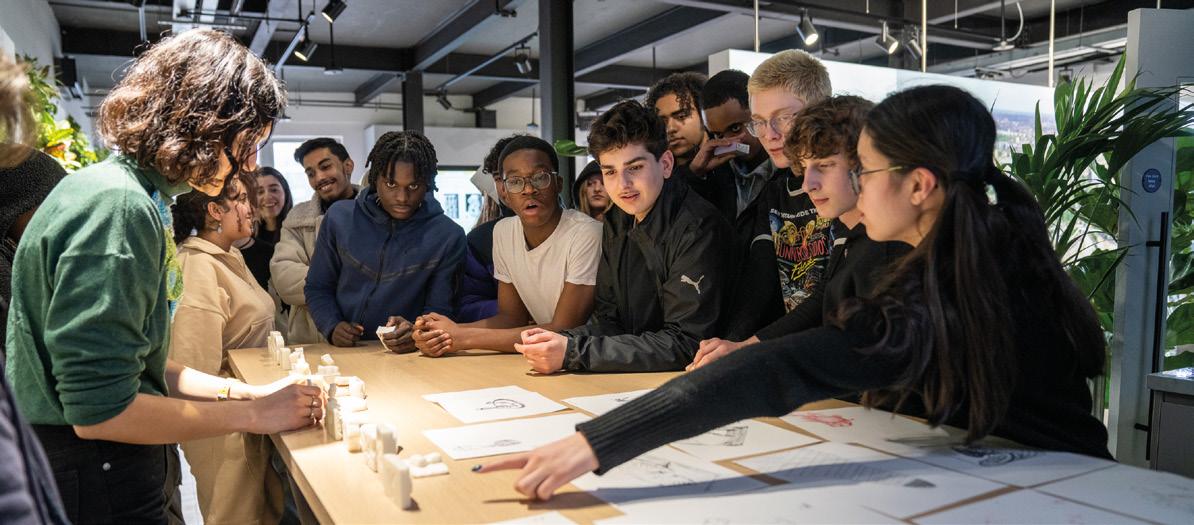


The shops on Lillie Road have been maintained by ECDC and let to local businesses and community groups. These include The Prince Pub, Dads House, Pedal Back Cycling, and The Hoarder Café and the Pop-Up.
Lillie Road shops helped achieve an estimated:
• £209,000 in social value created through rent-free space
• £258,214 in additioncal local spend
• Additional £149,764 GVA gross value added
• 4.4 FTE jobs sustained through supported activities
The Pop-Up is a temporary retail space that can be accessed rent-free by small businesses, emerging artists, or local designers has benefitted 12 small businesses throughout the year. A survey was provided to the businesses post-occupation to identify the social impacts they benefitted from during their time in the Pop-Up. Business owners reported impacts including business development, improving their business skills, and meeting new customers.
“Thank you very much for your opportunity to have ArtAscend use the gallery! Because of your generosity, we’ve managed to showcase over 60 young emerging artists and over 100 artworks.”
As well as facilitating work in the community, directly supporting local organisations has been vital to ECDC over the previous 12 months and beyond. Establishing meaningful relationships with local charities and people in the local community has been important as the organisation seeks to create community benefits. As part of their social commitments, ECDC creates additional impact through hosting work experience and staff volunteering at local organisations.

The volunteering and work experience activity by ECDC is estimated to have created around £120,000 of social impact . This is through additional resource support provided to the organisations through volunteering, and the skills and experience gained by the young people through their work at the organisation.
From July 1–12, we hosted six interns, each completing a one-week placement. They worked on meanwhile projects, networked with staff, and received career guidance, enhancing their professional skills and employability.
ECDC staff volunteered across various organisations, including:
• Refettorio Felix (Earl’s Court):
Volunteered twice in November and December, with a total of 9 staff members
• Solidarity Sports:
Volunteers assisted with the Summer and Easter programmes, engaging with young people in arts, crafts, and sports, involving 8 staff members over multiple sessions
• For Women:
2 staff volunteered at a women’s support session in April
• Action on Disability Job Club:
4 staff worked with young people with disabilities, including mock interviews, in May and October
• Fulham Cross Academy:
2 staff hosted career sessions for Year 10 students, speaking about career pathways, in January and February
• Dads House:
1 staff member supported a food bank in October
During the course of the assessment period, we have actively recorded and measured information about the effect that each activity has had on a range of people in the area. We have used this information to calculate the social and economic value of the activities.
Social value is the relative importance that people and society place on changes to lives that are affected by the social, economic, and environmental influences of development. It is calculated by placing a money value on the changes that have been created by activities across the following eleven categories:
Economic impact is measured several ways: the net additional expenditure, the gross value added, and employment from the Meanwhile Programme. Each element of the Programme impacts the local economy differently. Through a combination of interviews, information provided by each of the projects, reports, and published statistics, we have built up a picture of the overall local economic impact of the programme in 2024.
Our stakeholder groups:
• Artists and creatives
• Employees
• Families
• Local business owners
• Local children
• Local community and residents
• Local over 50s
• Local young people
• Migrants and asylum seekers
• Single mothers
• Single fathers
• Visitors
• Volunteers
• Trainees
• People with disabilities
• Local teachers

Key benefits:
413
full time equivalent jobs created
£13.6 million
gross value added created
£3,136,000
worth of health value added to the community, including support for disabilities, support for drug abuse, and increased mental and physical health
£23.1 million
generated in additional local spend
£1,761,000
worth of improved education and skills including digital skills for young people, educational attainment, and school readiness
£9.1 million in social impact created
£657,000
worth of improved neighbourhood and housing quality including improved feelings towards the area, support with fuel poverty, and support for the homeless and rough sleepers
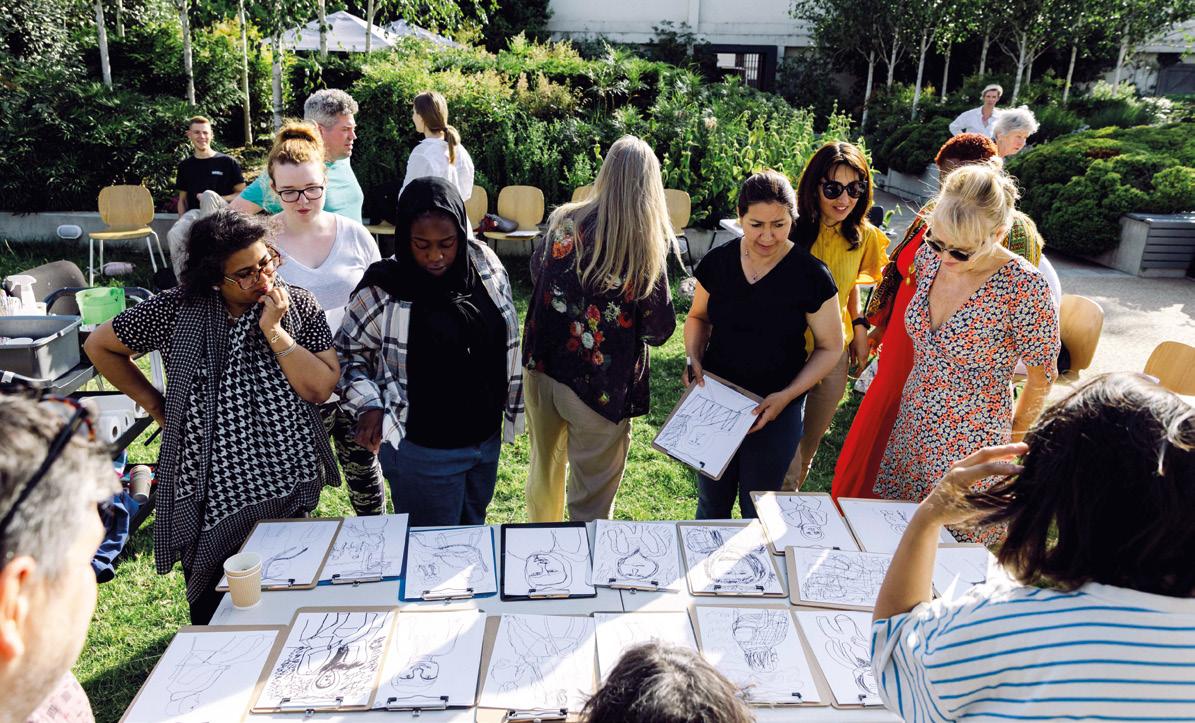
The Earls Court Development Company believes in the importance of using monetary values to help describe and explain our impact to our stakeholders. In the case of social value, monetary values are not always a direct representation of currency, but a measure used to translate the significance of an outcome into something understandable and relatable. To ensure that these monetary outcomes properly tell the story of how our programmes have impacted the local community, rigorous data and methodologies have been applied. The assessment of social value has been adjusted to show the ECDC contribution to the overall figure.
Social value is the relative importance that people and society place on changes to lives that are affected by the social, economic, and environmental influences of development.
The role of factors in determining social value
The social value of the Earls Court Meanwhile and Community Programme was determined by analysing the potential impact across eleven factors, as seen in the figure on Page 68. The process of monetising the social impact of the development can be broadly summarised as follows:
• RealWorth uses a range of primary and secondary sources to produce a list of changes to people’s lives (outcomes) because of the development
• Outcomes are then monetised by identifying an appropriate indicator (the unit of measurement), and then applying a suitable monetary value (or proxy) to each indicator
• The monetary values are multiplied by the numbers of people affected and the amount of time the influence of the project/ intervention was likely to stay with them to produce a gross value for each outcome
• The gross value of each outcome is then adjusted for contextual parameters, such as the extent that a change would have occurred without the intervention and the how quickly effects may drop off over time. The total social value is determined by summing the value of each adjusted outcome to get total social value of the development
Several sources of information were used to conduct this desktop study, including:
• Semi-structured interviews with representatives of beneficiary organisations
• Reports and outputs from beneficiary organisations, in particular mid-year and end-ofyear grants from Community Fund recipients
• Information provided by beneficiary organisations through email and phone exchanges
• Marketing and communications materials produced by ECDC and consultants
• Engagement and consultation outputs
• Local socio-economic information and statistics
This is simply the amount of additional money coming into the local area. This can be directly through ECDC funds or expenditure, the additional wages of the residents in Empress Place, the total spent by visitors at the BBC Earth Experience, or the value of the sales of creative artists in Empress Studios.
However, this is not the same as the added value of any new economic activity. Some of this expenditure is used to purchase inputs from outside the area e.g. the costs of repurposing the Mannequin Factory to become a theatre venue for the Lost Estate were mainly for professional services companies based in other parts of London. The salaries and wages paid to residents in Empress Place are used to pay for a wide range of services. Expenditure gives the total value of the transactions in the local economy, while GVA (below) gives the amount of value actually created.
GVA is a more common measure of economic activity. It is the increase in the value of the economy due to the production of goods and services. In simple terms, this is the value of sales minus the inputs used in production (or the value that is added to the inputs). For example, if a shop buys a toy for £8 and sells it for £10, the value added is £2 which contributes to paying salaries (to support jobs) and profit. GVA is produced by businesses (or other organisations) and is measured where the goods or services are produced. It is not related to where employees live.
Employment is measured in terms of Full time Equivalent (FTE) jobs for a year. In practice one FTE could be made up of several part-time jobs or a larger number of full-time jobs over a shorter period of time. Employment is also recorded where the job is rather than where the employee lives.
An important concept in estimating the economic impact is to determine the extent to which these effects are ‘additional’ compared with what would have happened anyway (or the counterfactual). Additionality includes consideration of several concepts: Deadweight – would all or some of the activities and outcomes have happened anyway; Displacement – have any of the activities stimulated by the project been at the expense of activity elsewhere, and Leakage: what proportion of the activities and outcomes occur outside the specific area being analysed.
Some of the GVA or jobs would have been created anyway without ECDC’s intervention. For example, some of the businesses and artists in Empress Studios may simply have worked from home or other spaces. In each case, we consider the overall additionality of the activities and apply this to the estimates of economic impact.
Throughout the report, we have used a range of sources to calculate the change in expenditure, GVA and employment. This requires a series of assumptions about, for example, incomes, the number of jobs supported by expenditure, the proportion of construction expenditure made within the local area etc. Where possible, we use published sources and provide links to the relevant research. In some cases, it is necessary to use our judgement based on the local area and the types of activities.
The additional economic activity will also have knockon effects through supply chains and as a result of the wages and profits that are re-spent in the economy. There are two types of multipliers:
Type I multipliers reflect the supplier linkage effects (sometimes referred to as indirect effects) arise as businesses increase their demands for goods and services from suppliers. These businesses in turn increase their demands for goods and services and so on down the supply chain.
Type 2 multipliers include both the supplier linkage effects described above and the income effect. This is the effect of increased income and profits being re-spent in the local economy, further supporting economic activity.
The value of these multiplier effects varies depending on the geographical area and the connectivity with neighbouring areas. Homes and Community Agency Additionality Guidance provides some broad guidance on the values that could be used at different geographies. It suggests a multiplier effect between 1.05 at a neighbourhood level to 1.3 at a regional level. For a local area that is well-connected to the rest of the city, we have used a multiplier of 1.15 throughout.
We have developed a case study for each activity to enable us to understand the way in which each contributes to the local economy. The impact of each activity is different, and its effects have to be considered. This has involved a wide-ranging programme of consultations and reviews of the available data to develop our estimates. It includes consultations with the leads of each of the activities, further interviews with a sample of beneficiaries, surveys, and information provided by ECDC.
The estimates are for the period November 2022 to October 2023 and the approach and methodology should allow comparable estimates to be developed in future years.